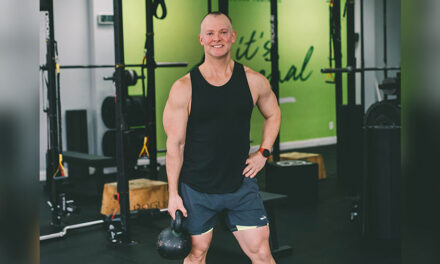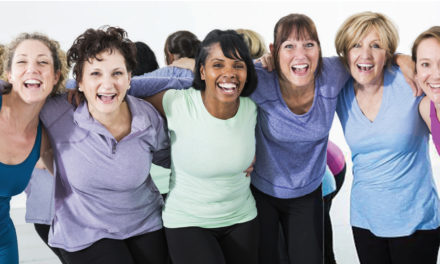As a yoga teacher and professor, health and wellness are central components of my work. Understanding the nature of aging and how choices influence it is important. My goal is to hone in on what we can control and how and why certain techniques work.
Many breakthroughs in science over the last decade can help unravel how to reverse the effects of bad environments, bad genes, and even time itself. Cell regeneration, brain elasticity, and how bodies respond to stress are important components.
There’s empirical evidence for the effects of awareness, meditation, and intentional breathing in reversing the aging process. And these studies don’t just show observed or reported results, there is evidence of the impact on the cellular level.
A ground-breaking example of this is recent research on telomere length; a telomere is the part at the end of a chromosome which aids in replication and stability of the chromosome. Researchers compared the DNA of Zen meditators with people who had not practiced meditation. They found meditators had longer telomeres and a smaller percentage of short telomeres in individual cells. Telomeres protect cells/chromosomes, but the telomere region shortens with age. This is tangible evidence that mindfulness practices influence aging.
Meditation is a central focus in many studies looking at wellness, health, resilience, aging, and much more. There is an overwhelming amount of books, videos, workshops, and apps available to help cultivate a mindfulness practice. The important thing is to keep it daily, not necessarily difficult or even structured. Just as we practice dental hygiene, mental hygiene is also important. A short daily practice, just like brushing and flossing, helps the mind and body last longer.
Focused meditation sharpens brain function by flossing out mental and emotional buildup. Adding in breathing techniques brushes the vagus nerve, strengthening the autonomic nervous system and the response to stress.
Researchers at Colombia University have shown specific breathing techniques can improve performance in elite athletes and resilience in people with high stress. They suggest it’s more than just creating an optimal environment for gas exchange during breathing because of the element of intentional awareness.
Intentional awareness in the present moment allows us to strengthen our ability to think before responding. In her book, Counterclockwise, Ellen Langer reveals how attentional awareness can actually reverse signs of aging. Langer speaks of mindfulness as a state of being aware of one’s surroundings and movement. Dan Siegal expands on this in his book, Aware. Practicing awareness in a meditative setting increases consciousness and regenerates the mind’s energetic capacity.
This table includes awareness, meditation, and breathing exercises for different types of physical activity. Seek out teachers and resources in your local community to continue cultivating a practice.
|
Awareness |
Meditation |
Breath |
|
|
Runners |
Feel each step Leave the headphones at home on your next short run and concentrate on how much you can take in. |
Open-Focus Acceptance Set an alarm for 3–11 minutes, allow thoughts and feelings to come and go. |
Forceful Exhalation Take a long inhale and 10 strong, short exhales. Repeat about 10 times. |
|
Strength Trainers |
Grounding In between sets or intervals, take a moment to close your eyes and feel the connection of your feet or seat to the ground. |
Progressive Relaxation/Body Scan Lying down, bring your attention to your feet, squeeze them, and then feel them relax as if they were melting into the ground. Progress up the legs, torso, arms, face, etc. |
Three-Part Breath Inhale by filling the belly and waist first, then the ribs, then the chest. Reverse it on the exhale, compressing the chest, ribs, then belly. |
|
Class-Goers |
Check-ins Set a goal of five times during class to notice how fast or slow you are breathing, what you are thinking, and how you are feeling. |
Yoga Nidra Check out a local Nidra class or look it up on YouTube before bed. |
Triangle Breath Inhale for 3–5 counts, exhale for 3–5 counts, hold the breath for 3–5 counts, then repeat. |
|
Thrill-Seekers |
Sensing Immediately before and after an activity, pick a sensation to focus on (sight, sound, touch). Take at least 30 seconds to feel that sensation fully and notice any differences. |
Meta Imagine yourself safe, happy, and peaceful. Then imagine a friend or family member feeling safe, happy, and peaceful. Then imagine your community or the world safe, happy, and peaceful. |
Alternate Nostril Breathing Plug the right nostril and breath in through the left. Switch to plug the left nostril and breath out through the right. Keep the left closed and inhale through the right, then switch sides to exhale. Repeat. |
Even for just a few minutes a day, intentional awareness, attention, and breathing promote a healthy mind and body. When done consistently, these practices create an optimal environment for cell regeneration, neural integration, vagal tone, and gas exchange with the additional benefit of feeling good.
Research and resources cited in this article are available through the author.
Dr. Tegan Jemma Reeves is a yoga teacher and researcher studying embodied literacy, the ways we teach and train at the confluence of mind and body. You can contact her and follow her on Instagram @dr.tegan.the.vegan







